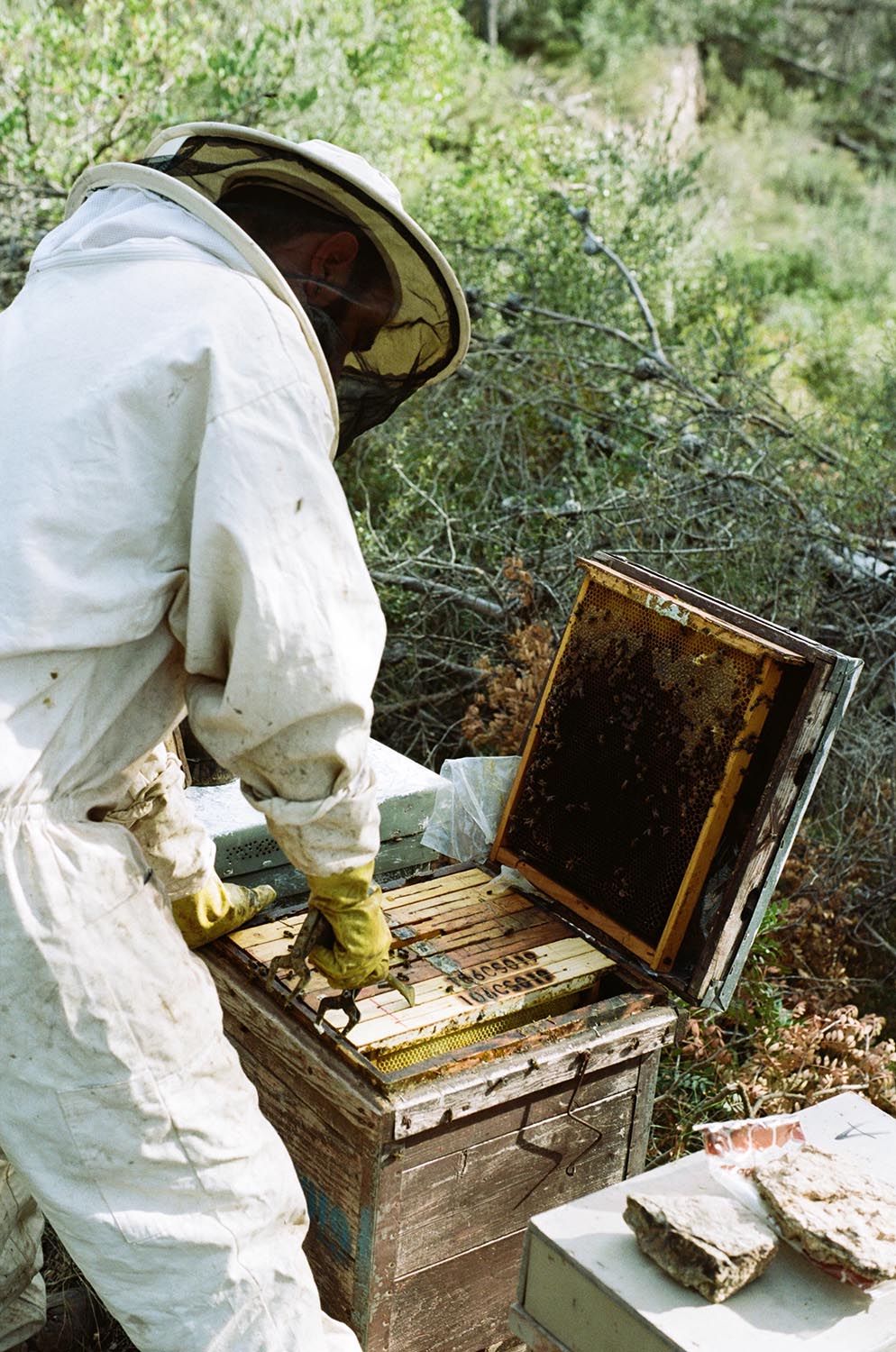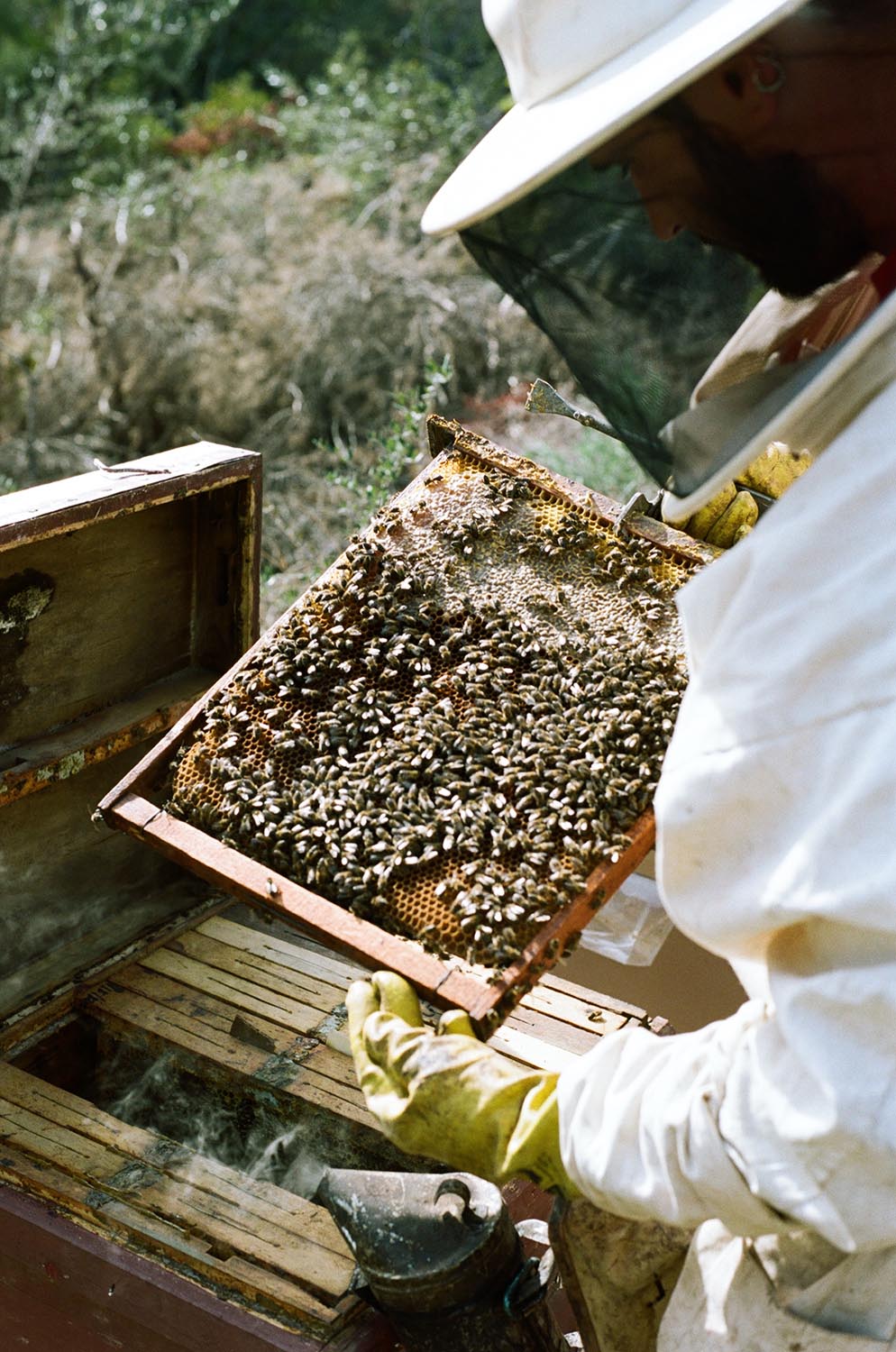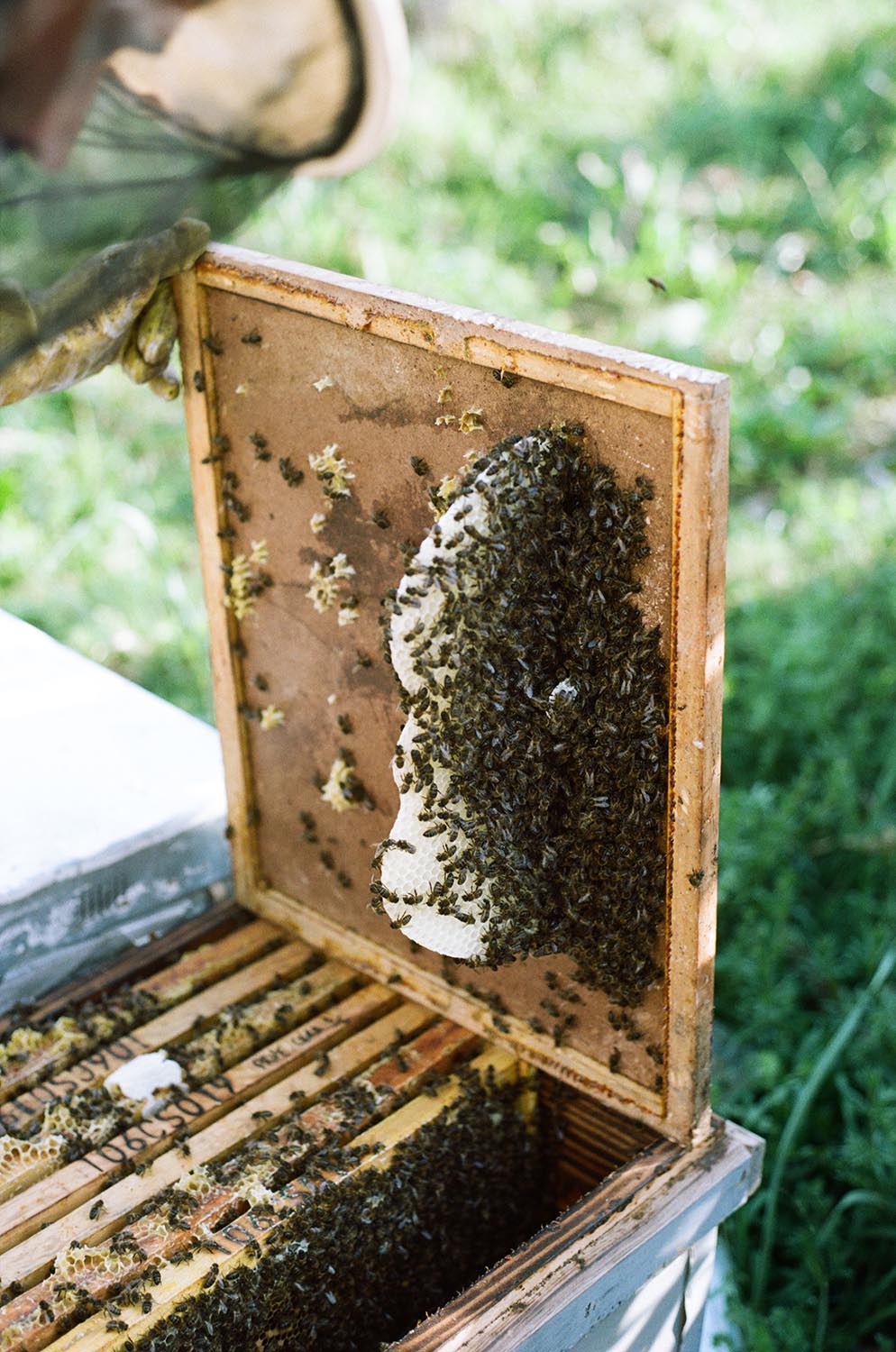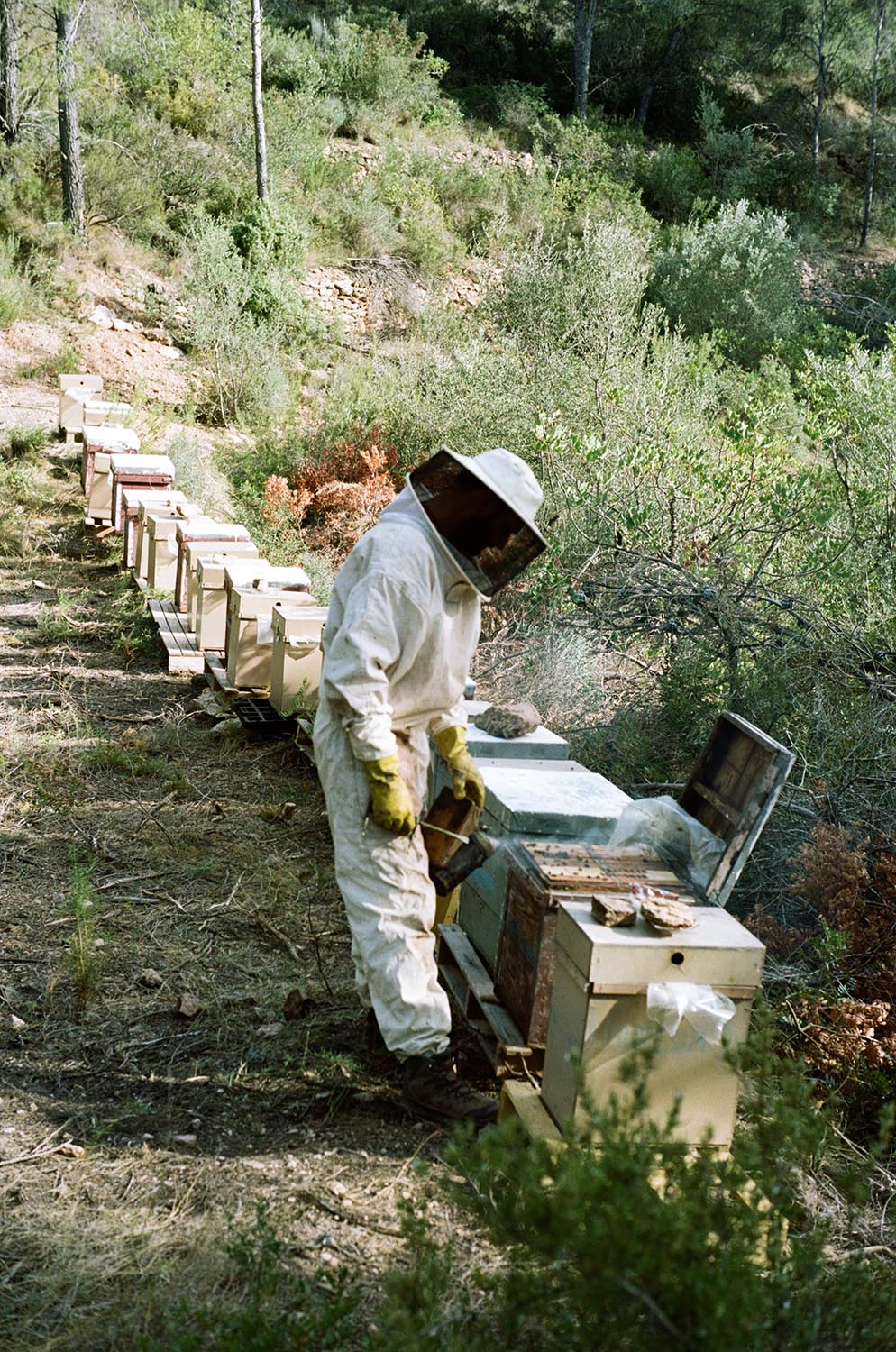From Honeycombs to Highways is a thesis publication that condensates ecocritical research about beekeeping and the industry dedicated to the production of beeswax and honey, through a spatial analysis of human-bee interactions. The publication is all produced in 90-gr Biotop paper and waxed on the front and back to become a waterproof object.
Contemporary Bee Cultures
There is evidence of the relationship between humans and bees since the Neolithic. After the gathering period, this process has been mediated through ecologically-responsive technologies commonly known as beehives.
These hybrid devices designed by humans and inhabited by bees, have been used to breed entire insect societies and facilitate the extraction of substances like honey and beeswax, reflecting the demands of certain cultural periods.
Over time, the development and exploration of different beehives have led to the evolution of contemporary beekeeping. This practice has progressively intensified in the last centuries, particularly in the extraction of honey, resulting in current crises of exhaustion that manifest in the declining global bee health and the current professional beekeeping crisis.
The Framed Superorganism
Sociobiologist Jürgen Tautz describes a bee colony as a complex entity consisting of thousands of worker bees, hundreds of drones, and a single queen bee, that coordinates the production of an external reproductive organ.
Attached hermetically to the top of a cavity, the honeycomb “organ” grows downward in a size dictated by the colony’s storage needs of brood and honey. The shapes guide hot and cold air currents to maintain this produced organ at 35 degrees, similar to the body temperature of mammals.
In modern beekeeping, specific technologies are employed to facilitate the manipulation of honeycombs, deconstructing the adaptive organ into frames and violating its heat and scent retention principles. With its top opening, the modern hive dissipates the heat generated by the buzzing of bee bodies, powered by their own honey.
Disruption in Nectar Pastures
The modern hive transformed beekeeping into an economically viable activity but had to adhere to principles of scalability to be profitable. Today, commercial beekeeping operations often consolidate hundreds of colonies within a single apiary.
These “hypercolonies” undergo transhumance, moved constantly in search of flowering pastures. Honeybees quickly monopolize pollen resources, leaving native pollinators without sufficient nectar and therefore hindering the reproduction of some endemic plant species.
The necessary concentration of colonies for professional beekeeping has trained and shaped Apis Mellifera and other subspecies to be feral pollen gatherers across territories, showing an example of the undeniable intertwining between human economy and pollination ecologies.
The Quiet Queen
In today’s apiaries, queens are bred and chosen to enhance specific biological traits that favor the economy of beekeeping. Usually, selective breeding is practiced to reduce swarming tendencies, which means bees are more likely to focus their efforts on honey production. However, swarming is the main reproductive instinct of a bee colony, it multiplies its survival chances by establishing new hives and regenerating honeycomb free of impurities and parasites.
Type: Research
Project: Critical apiculture

































